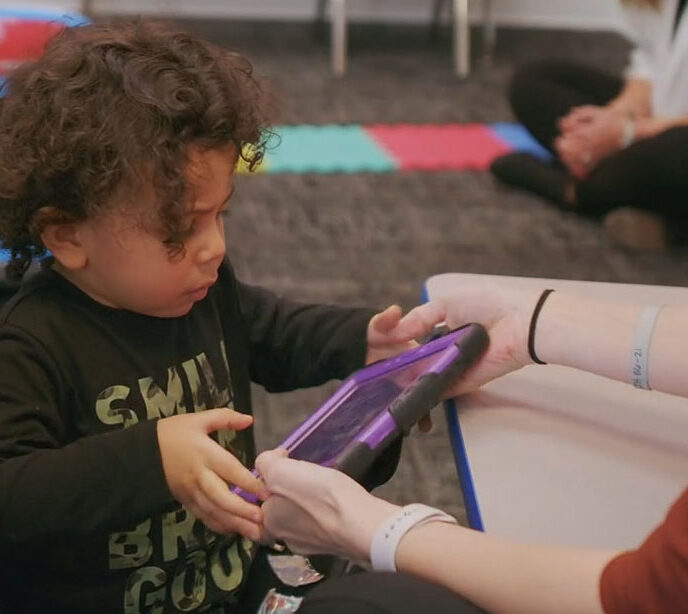Autism Minute – Episode 2 – Instructional Control
Lighthouse Autism Center has recently completed the second episode of our Autism Minute series. The Autism Minute is a video series created by Lighthouse Autism Center to provide helpful tips and resources for parents and caregivers of children with Autism. Each series is led by one of our 10 full-time Board Certified Behavior Analysts, and covers a topic we believe to be relevant to caregivers.
The second episode of the Autism Minute is about Instructional Control and your child. The video discusses what Instructional Control is, how to gain it with your child, and the benefits that come from having instructional control, including gaining respect from your child and forming a better relationship with them.
[youtube_sc url=”https://www.youtube.com/watch?v=aFx6bSxRiMI” autohide=”1″]
| Hi, my name is Natalie Donkersloot. I’m a program manager at Lighthouse Autism Center at the Edison-Mishawaka location working with the early learners. I’ve been at Lighthouse for a little bit over a year. I’ve began having a passion for applied behavior and analysis in autism in my undergrad at Western Michigan University. Then I decided to pursue a master’s degree in applied behavior analysis while at Western. One of my favorite things about working at Lighthouse is that I get to make a difference in children’s lives every day. Thank you.
|
| Today we are going to talk about the importance of earning instructional control between parents and children who have autism. So what is instructional control? It is pairing yourself with your child so that you have a positive working relationship and your child will want to follow your lead to listen and learn. What is pairing? It is the process of combining or pairing the learning environment, people, and setting with items that your child already finds rewarding. In other words it is very important to have a relationship with your child in which they respect you. Often when we have new kiddos start at Lighthouse, parents report that their child does not listen to simple demands or engages in problem behavior when they do not get what they want. While this is not uncommon for children who have autism, there are strategies to help you build and improve a relationship with your child. According to Robert Schramm, there are seven steps to earning instructional control with your child.
|
| After implementing the seven steps of instructional control with your child, you will build a better relationship with your child, earn their respect, experience less problem behavior, and you will begin to see your child want to listen to you in order to get good things. You are not going to be able to teach your child everything you want him or her to learn, if you do not earn his/her willingness to follow your lead first.
|
| Step 1: Clean the House of Toys. The first step is showing your child that you are the one in control of items that they want to hold or play with and that you will decide when they can have them. You should be in control of all of the toys in the house and the child has to go through you to get those items. This means that you need to clean the house of any toys, items or activities that your child likes to play with by putting all of the toys up out of access of your child.
|
| Step 2: Play with your Child. The second step is showing your child that you are fun. This means interacting with your child when they are playing with their favorite toys and activities. You never want to manipulate the child, but manipulate the toy in order to get what you want. This means that the child can play with the toy, but only when it is with you. When the child leaves the area with you then they lose access with the toy.
|
| Step 3: Show that you can be Trusted. The third step is showing your child that you can be trusted. It is very important to always say what you mean and mean what you say. This means following through with any and every demand that you give your child. You want to make sure to consider your words carefully. For example, do not ask questions that your child can answer “no” to when you would like them to do something. Do not ask, can you through your plate away? Instead say, throw your plate away.
|
| Step 4: Provide Toys when your Child Complies. The fourth step of instructional control is showing your child that following your directions are to their benefit and that is the best way for them to obtain what they want. Give your child easy directions and if they comply then give them access to their favorite toys or activities. For example, if you ask your child to clean up the toys on the floor and they complete the task the first time you ask, then allow them to have five minutes playing with a preferred toy. However, if you give them unlimited time with that toy, the toy will lose its reinforcing value. Also it is important to have reasonable expectations of what you want your child to do based on his/her skill level.
|
| Step 5: Provide Toys after every Appropriate Behavior. The fifth step of instructional control is making sure that you provide a reinforcer every time your child engages in good behaviors. You want to make sure to give attention to the good things that they do. This can be something as simple as telling your child what a nice job they are doing playing with one of their siblings.
|
| Step 6: Know your Child’s Favorite Toys. The sixth step of earning instructional control consists of demonstrating that you know your child’s priorities as well as your own. Make sure to keep a list of their favorite items and activities and then deliver the more preferred toys for harder instructions. If your child has never been able to independently get dressed, and they do one morning, then that would be a great time to provide a preferred toy or activity.
|
| Step 7: Show your Child that choosing to NOT Listen to you will NOT Benefit Them. The seventh step of earning instructional control consists of showing your child that ignoring your directions or choosing inappropriate behaviors will NOT result in any good things like toys, for instance. This means that the ONLY way that they can get attention and toys is by engaging in appropriate behaviors. If they engage in inappropriate behaviors they will NOT get toys and attention.
|
| So here are the “Take Away Points”. By implementing the seven steps of earning instructional control with your child, you could potentially improve your relationship with your child, earn your child’s respect, experience less problem behavior, and you will begin to see that your child wants to listen to you in order to get good things. You are not going to be able to teach your child everything you want him/her to learn if you do not earn his/her willingness to follow your lead first. Here are the seven steps one last time. First step, clean the house of toys and keep them out of reach of your child. Second step, play with your child when they are playing with their favorite toys and activities. Third step, show your child that you can be trusted. Fourth step, provide toys when your child complies. Fifth step, first provide toys after every appropriate behavior, and then once they’re engaging in those appropriate behaviors reliably, expect more out of them before you give them the same type of reinforcer. Sixth step, know your child’s favorite toys. Seventh step, show your child that choosing to not listen to you will not result in toys or good things.
|
Together, we can unlock your child’s potential
Related News

10/07/2025
PECS and Its Use in ABA Therapy – Lighthouse Autism Center
The picture exchange communication system, or PECS, is a teaching system that can help an autistic child or another individual with speech difficulties improve their communication skills. We take a look at PECS’ role in ABA therapy and unpack how it works. What Is the PECS System and How Is It Used In ABA Therapy? […]

08/13/2025
ABA Therapy Tips for Taking Your Autistic Child to the Dentist
Taking Your Autistic Child to the Dentist For any child, and even adults, a trip to the dentist can often be filled with anxiety, fear, and discomfort. For a autistic child, especially, these feelings can be even further heightened by sensitivities to noise, smell, and touch. To make this experience better for both the child […]

08/13/2025
Tips for House Hunting with Your Child on the Spectrum
Guidance for Families with Children with Autism when Moving Moving is always a stressful and complicated endeavor. But when you have a child on the autism spectrum, the thought of packing up your household and moving somewhere new can seem like a near-impossible task. Parents often worry that their children will get overwhelmed by this […]


